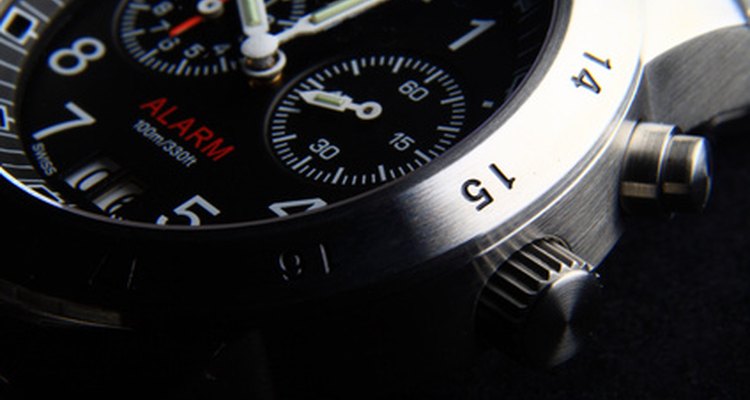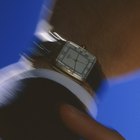
The recording of time started with observing the movement of celestial bodies and numbering the hours of the day. As technology increased, humans became more and more interested in accuracy when it came to telling time. Now, we have atomic clocks (the development of which led to much better wristwatches) that use a microwave signal emitted from atoms as they change energy levels. To synchronize your watch for the most accurate time possible, you will first have to know how to set your watch's time and then check a universal/atomic clock to match your wristwatch's time to it. The process is simpler than it sounds.
Prepare your watch for setting. An analog wristwatch will probably have a button on the side that needs to be pulled into the second of three positions, especially if it's a chronometer watch. A digital watch will have a button on the side that will need to be pushed in to set the watch's time.
Set the hour and minute of your watch to the current hour and minute. Allow the watch to run until the second hand, or the seconds, is at zero. If this changes the minute over, that's okay. You'll change it again when you compare it to the atomic clock. Pull out or push your button again to stop your wristwatch from running and prepare it for setting.
Visit www.time.gov. This is the official time according to the U.S. Government. Choose your timezone, according to the map. Wait for the time to load.
With your hand poised over the minute button/hand on your watch, wait until the current minute changes over and the seconds are at zero on the atomic clock. When the seconds are at zero, change your minute to the next one. For example, if it is 1:12 p.m., wait until the atomic clock says 1:12:59. When it changes to 1:13:00, change your watch to read 1:13. Your watch will be synchronized.
Related Articles

How to Set a Timex Indiglo

How to Set the Date & Time on an Omega ...

Casio Waveceptor 2735 Instructions

How to Change the Time on the Casio ...

How to Operate a Casio G-Shock

Nike Triax Watch Instructions

How to Set a Wristwatch

How to Reset a Timex Watch's Perpetual ...

How to Change the Time Zone on My ...

How to Set a Casio EFA 119 Watch

How to Set the Time on a Puma Watch

How to Set the Date on a Citizen Eco ...

Columbia Sportswear Watch Instructions

How to Change the Date on a Junghans ...

How to Set the Time on a Children's ...

How to Adjust the Time on a Casio ...

Freestyle Predator Watch Instructions

How to Set Timex Watches

How to Set the Alarm on the Casio ...

G Shock Watch Instructions